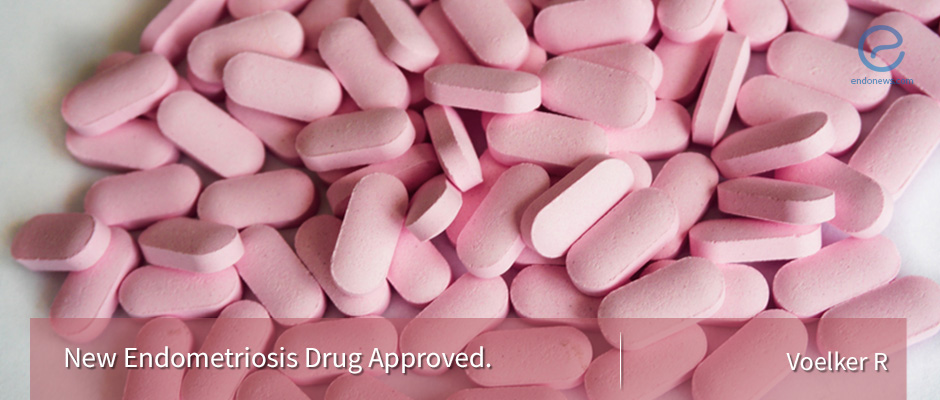FDA Approves Endometriosis Pain Treatment
Sep 5, 2018
This is the first treatment to be approved in 10 years.
Key Points
Highlights:
- A new medication that can reduce endometriosis-associated moderate to severe pain has been approved by the U.S. Food and Drug Administration (FDA).
Importance:
- Endometriosis affects around 10 percent of women of reproductive age who are having to live with chronic pelvic pain and other pain associated with the disease.
- Surgery is the main treatment that is used to reduce disease-associated pain but it is an invasive approach and may not be 100 percent efficient.
- An oral treatment that could reduce pain could be a life changer for women living with endometriosis.
What's done here:
- The decision of the FDA was based on the results of two Phase 3 clinical trials that tested the effects of two doses of Orilissa compared to placebo.
Key results:
- Around half of the women who received 100 mg of Orilissa/day, and around 75 percent of women who received 200 mg of Orilissa /twice a day had reduced period pain; compared to only 20 percent of women who received a placebo.
- Around half of the women who received 200 mg of Orilissa also had reduced non-period pain compared to 37 percent of women who received a placebo.
Lay Summary
The U.S. Food and Drug Administration (FDA) approved a new medication for the treatment of moderate to severe pain associated with endometriosis, making it the first treatment to be approved in 10 years.
The decision was announced in the Journal of American Medical Association (JAMA) in September 2018, reported by Rebecca Voelker.
The treatment taken by mouth called Orilissa (elagolix) was jointly developed by Neurocrine Biosciences and AbbVie. It is a so-called gonadotropin-releasing hormone (GnRH) antagonist meaning that it works by blocking the effect of GnRH, which is a hormone that is produced by the brain and that controls the secretion of sex hormones by the ovaries.
Endometriosis develops as a result of tissue resembling the one that normally lines the uterus to grow outside the uterus forming lesions. These lesions respond to the hormonal changes that control the menstrual cycle in the same way as the normal lining of the uterus by growing and shedding each month. However, because they are located outside the uterus, there is no safe route for them to leave the body. This causes inflammation and scarring and leads to chronic pelvic pain, painful periods, and pain during intercourse. Blocking the production of sex hormones by the ovaries can, therefore, halt the menstrual cycle and reduce pain caused by endometrial lesions.
The FDA’s decision to approve the treatment was based on the results of two Phase 3 clinical trials that included a total of 1,285 women with moderate to severe endometriosis-associated pain. The investigators gave the women two different doses of Orilissa (150 mg per day or 200 mg twice a day) or a placebo and compared the effect on period pain as well as other pain.
They found that half of the women who received 150 mg per day of Orilissa and around 75 percent of those who received 200 mg of the treatment twice a day had reduced period pain. This reduction was only 20 percent of women who received a placebo.
The investigators also found that about half of women in both trials who took 200 mg of Orilissa twice a day had a reduction in endometriosis-associated non-period pain. This ratio was 37 percent in women who were given a placebo.
Orilissa may have side effects, the most serious of which is a reduction in bone mineral density. According to the company, it should therefore not be used for more than two years at the lower dose of 150 mg per day and for no more than six months at the higher dose of 200 mg twice a day.
Other side effects include hot flashes and elevated levels of lipids in the blood. The treatment should not be used by women who are pregnant.
Research Source: https://www.ncbi.nlm.nih.gov/pubmed/30193259
New drug Orilissa (elagolix) clinical trial FDA pain relief endometriosis

